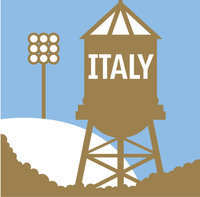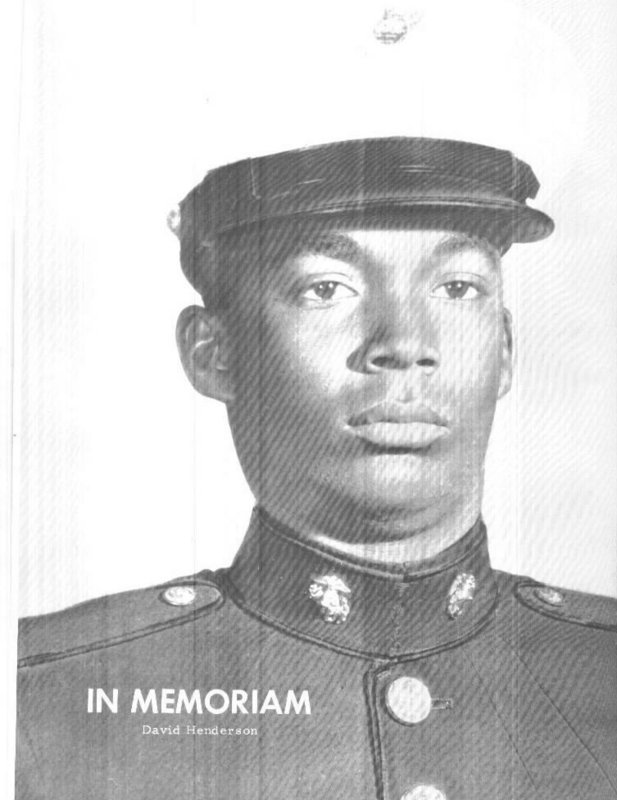Lest we forget
David B. Henderson, Jr.
Memorial Day, originally called Decoration Day, is a holiday of remembrance for those who have died in our nation’s service. It can also be a day to remember what other members have lost in service to our country.
Memorial Day was first observed on May 30, 1868 when flowers were placed on the graves of Union and Confederate soldiers at Arlington National Cemetery. It is now celebrated in almost every state on the last Monday in May when Congress passed the National Holiday Act of 1971.
Traditional observances of Memorial day have waned over the years because many Americans have either forgotten or were never taught the meaning and traditions of Memorial Day. At many cemeteries, the graves of the fallen are increasingly ignored or neglected. While there are towns and cities that still hold Memorial Day parades, many have not held a parade in decades. Some people think the day is for honoring any and all dead, and not just those fallen in service to our country.
There are however, a few exceptions. Since the late 50’s on the Thursday before Memorial Day, the 1,200 soldiers of the 3d U.S. Infantry place small American flags at each of the more than 260,000 gravestones at Arlington National Cemetery. They patrol 24 hours a day during the weekend to ensure that each flag remains. At the Italy Cemetery, volunteers place flags at the graves of all military buried there to honor their service to our country.
We need to remember those that died in service to our country. David B. Henderson Jr. is one of Italy’s own that did exactly that. He willingly gave his life for the American people and their freedoms.
The following is a speech delivered by Clay Major at the Italy High School Veteran’s Day program last November. The pictures were furnished by Suzy Major.
After basic training, on October 4th, David arrived in Vietnam , a place with bleached white beaches, crystal water, flat plains, and thickly overgrown green mountain ranges. Being a 20 year old from a small Texas town, the sight must have been both breathtaking and frightening.
Mike 3/7 Company was stationed on an area known as Hill 55 in the Quang Nam Province . The general area was also ominously known as Down South. In 1968 Down South was a bad place to be. Hill 55 was the regimental headquarters for the 7th Marines. It had 12 man tents with wood floors made from pallets and plywood. There was also a mess hall which showed movies at night and a club room where they would meet and hang out.
David’s company patrolled its tactical area of responsibility with small units; platoons, squads, or 3 man units. David belonged to the 2nd squad 2nd platoon. They went out in the early evening and came back in the late afternoon with most activity occurring at night. After dark, everyone who was out on patrol was set up on ambush. Moving around at night created a silhouette and made the foot patrol Marines very vulnerable.
After being at Hill 55 for two days, David’s company was ordered to Hill 52 to support an operation named “ Maui Peak ”. His company along with 2 other battalions spent 3 weeks clearing a wooded area of enemy soldiers known as Charlie Ridge . When the Marines were finished, Charlie Ridge was a tall, hot mound of dirt.
David and his company were ordered back to Hill 55 and arrived on November 1st. Although it was hot and dirty, it felt like civilization considering that previously on Hill 52 they’d only had C rations to eat and had to shave in their helmets. At Hill 55 they had ice, hot food, and hot water, not to mention a wood floor and a roof.
On November 3rd, David’s five man squad was sent out on its routine patrol. The next afternoon on the southeast side of Hill 55, David and his men were returning from their patrol at around 4:00 in the afternoon when they found a bloody bandage along with a blood trail. They followed and found more blood and drag marks. They called in their find to Mike Company. They were at the edge of an old burial ground with burial mounds four feet high and four feet wide. They thought it might be an ambush, but decided to leapfrog from mound to mound following the blood trail to the other side using the mounds for cover. The point man, E.G. Anderson , was halfway across when he was shot in the stomach. He was still alive, so David, second behind E.G., moved forward to retrieve his buddy and received small arms fire to the head and upper body. He was killed instantly. The other three Marines were pinned down and taking fire from all sides.
Three more platoons came to their aid and began taking on heavy fire. The firefight lasted until 3:00 the following morning. By the time they reached David’s body and his buddy, E. G. had bled to death, and six others had been wounded. An infuriated Mike Company regrouped seeking retaliation on the enemy on November 6th and 7th losing ten more men in the same area.
David and E.G.’s death resulted in the revelation that the enemy had moved in large numbers into an area referred to as Dodge City near Hill 55 and was obviously planning to attack the nearby Marine headquarters.
The Marines called in more reinforcements. The ensuing battle became known as “Operation Meade River”. It was the largest combat airlift in Marine Corps history to date. They lifted eight infantry battalions into the air at one time even using Army choppers to carry Marines because the Marine Corps didn’t own enough at the time. Operation Meade lasted two weeks and cleared out “ Dodge City ” once and for all of enemy combatants.
A memorial service was held on Hill 55 on November 12, 1968 in honor of PFC David B. Henderson. Jr., and the other eleven Marines who lost their lives that month. His helmet was placed on the butt of his erect gun along side the others standing on the hill. The memorial service bulletin read, “Concern for God and Man.”
Although David B. Henderson, Jr. was only in Vietnam for 30 days, the influence his life had on the lives and actions of other Marines there made a difference. He died trying to rescue his friend, and unaware that in his death he saved the lives of countless other Marines.
Webster defines sacrifice as “the forfeiture of something highly valued- an idea, object, or friendship- for the sake of something or someone considered to have a greater value or claim.”
David B. Henderson, Jr. believed in sacrifice. Because he believed in sacrifice he was able to put aside himself for the sake of his family, his friends, his school, and his country. Our school, our community and our nation will forever be indebted to PFC. David B. Henderson, Jr. and his family for his ultimate sacrifice.

